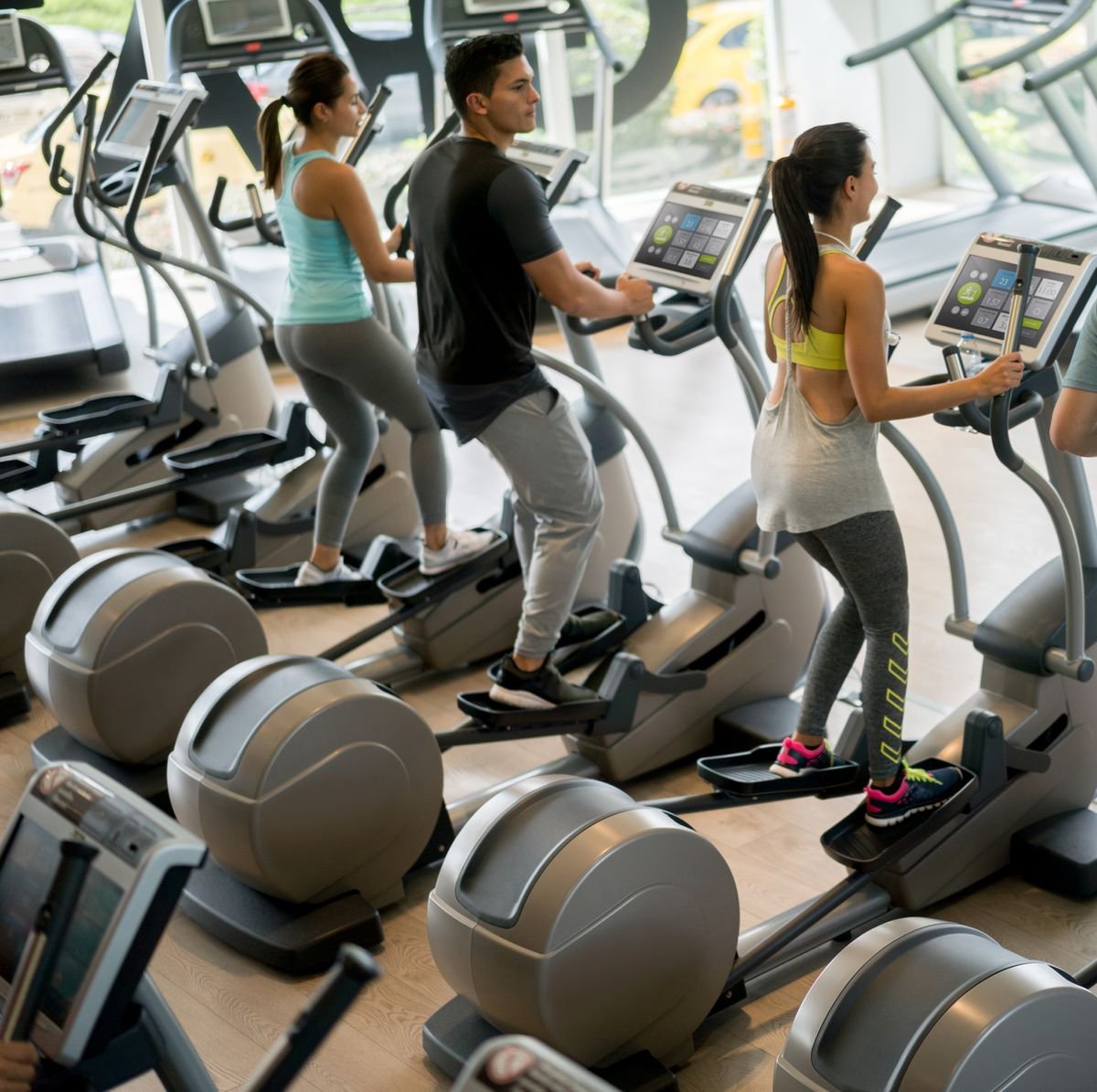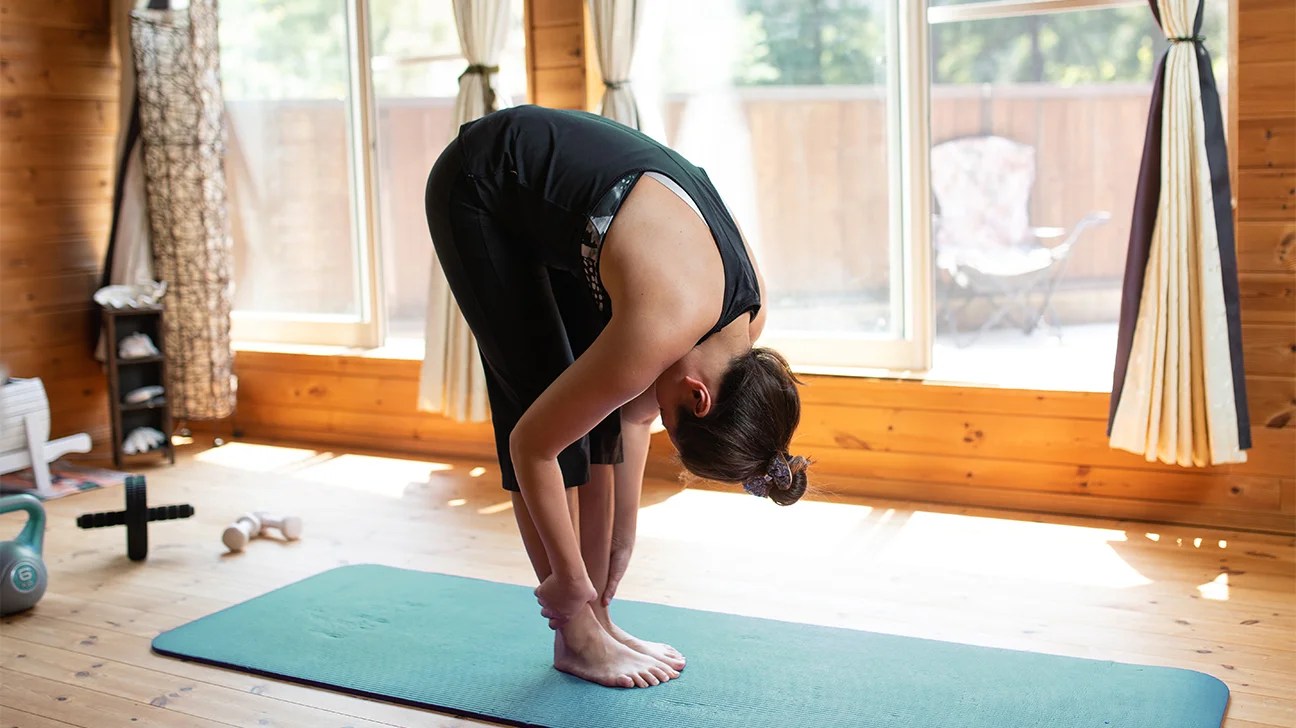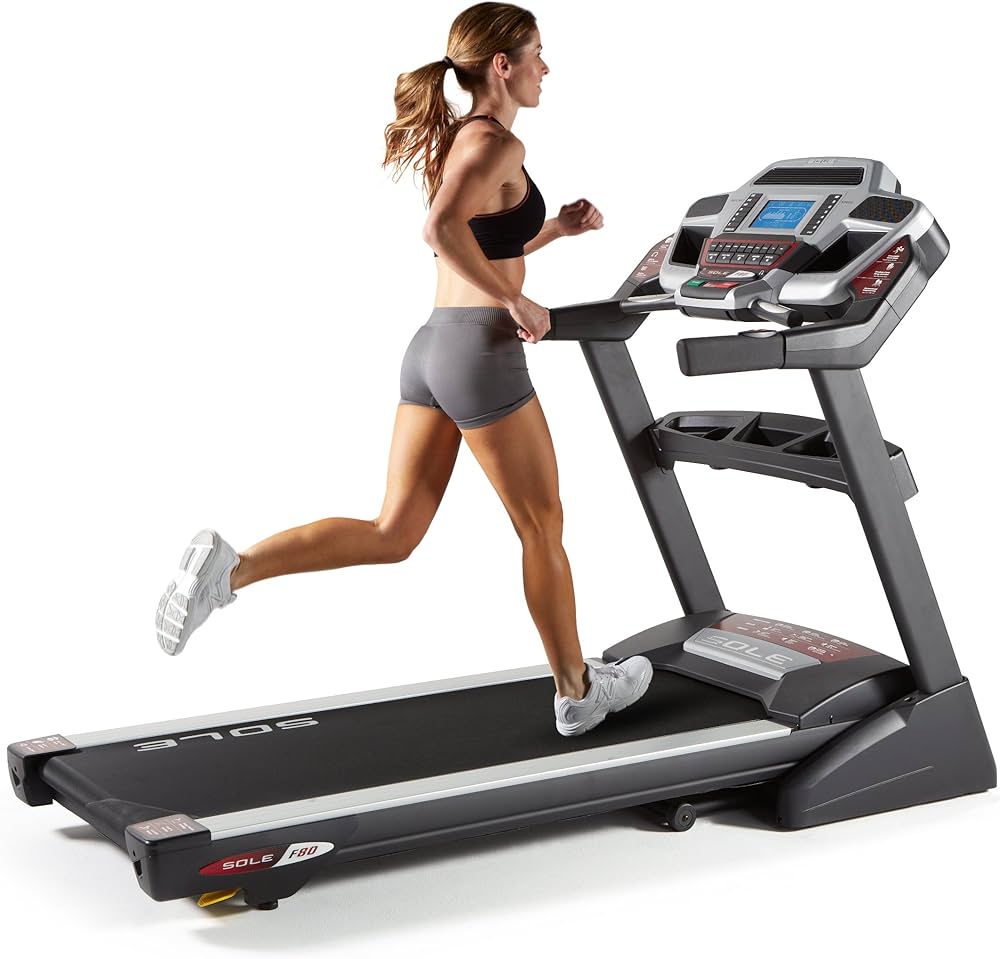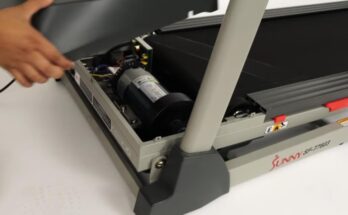Walking on a treadmill without holding on can be challenging because of balance issues or a lack of core strength. It requires coordination and confidence in one’s stability to maintain stride without support.
Exercising on a treadmill is a popular way to improve cardiovascular health and endurance. Many individuals find themselves holding on to the handrails or console, often because they feel unsteady or are concerned about falling. Being able to walk without holding on engages core muscles, encourages proper posture, and can lead to a more effective workout.
For those new to treadmill walking, there might be a period of adjustment as they become accustomed to the moving belt. Building up core strength, working on balance, and starting at a slower speed are excellent ways to transition to hands-free walking. It’s important to always prioritize safety and to work within comfort limits to prevent injury while aiming for a more balanced and autonomous treadmill workout.

Credit: www.amazon.com
The Science Behind Walking Stability
The Science behind Walking Stability explains why some people might find it hard to walk on a treadmill without holding on. This can reveal important insights into your body’s functions. It’s not just about muscle strength, but also how your body maintains its balance. Let’s explore the factors that contribute to walking stability.
Body Mechanics And Balance
Walking involves complex body mechanics. When you walk on a treadmill, your body must adjust to the moving belt. If your muscles and neurological system are not working together perfectly, you might feel unsteady. Holding on can compensate for these issues. Here’s a look at some key points:
- Leg muscles must generate the right amount of force.
- Arms swing for added momentum and balance.
- The spine must remain aligned for optimal posture.
- Feet must strike the treadmill at the right angle.
Better body mechanics lead to improved balance. Practicing good posture and core strengthening exercises can help you walk without support.
Role Of The Inner Ear In Equilibrium
Your inner ear plays a crucial role in maintaining balance. It contains structures called the semicircular canals, which are filled with fluid and hair-like sensors. They work as follows:
| Movement | Change in Fluid Movement | Signal to Brain |
|---|---|---|
| Head Tilts | Fluid moves, bending hair-sensors | Brain interprets balance |
| Treadmill Starts/Stops | Fluid shifts unexpectedly | Brain receives mixed signals |
These signals help the brain understand your body’s positioning in space. When these signals are off, like on a treadmill, your balance suffers. Gradual training and balance exercises can improve your inner ear’s contribution to stability.
Challenges Of Treadmill Walking
Walking on a treadmill comes with its unique set of challenges. This type of exercise differs significantly from walking on solid ground and requires a certain level of balance and adaptation. Many people find they can’t walk on a treadmill without holding on. Understanding the reasons behind this can help improve balance and confidence on the treadmill.
Differences Between Ground And Treadmill Surfaces
The feel of walking on a treadmill is not the same as walking on the road. A treadmill’s belt moves under your feet, creating a need to coordinate your steps differently. Here are some key points:
- Treadmill Surface: It’s smooth and predictable, unlike outdoor terrain which might be uneven or rocky.
- Conveyor Belt Effect: Your feet must adapt to the moving belt, which can be disorienting.
- Pace Management: The treadmill sets the pace, requiring you to match its speed to avoid stumbling.
- Lack of Natural Elements: No wind resistance or varying landscapes to navigate around.
Adapting To A Moving Platform
Adapting to the moving platform of a treadmill is essential but can be challenging. Here’s what’s necessary to make this adjustment easier:
- Start Slow: Begin with a slow speed to get used to the belt’s motion.
- Gradual Increase: Gradually increase the speed as your body adapts.
- Posture: Stand upright and look ahead rather than down at your feet.
- Use Handrails Wisely: Lightly touch the handrails if needed, but don’t rely on them.
Remember, with practice, your body will learn to balance without needing to hold on, leading to a more effective workout and better treadmill experience.
The Importance Of Arm Movement
While walking on a treadmill, arm movement plays a crucial role. It may seem trivial, but arms create rhythm. This rhythm helps your body move smoothly. Arms swinging naturally counteract leg motion. They help in maintaining balance. Without this, maintaining a proper gait is harder. Let’s look at how arm movement coordinates with leg motion and contributes to balance.
Coordination With Leg Motion
Coordination between arms and legs is vital. Arms swing in opposition to legs. This action ensures stability and forward momentum. The natural movement also reduces stress on the spine. Consistent arm swing aligns with the stride of the legs. This coordination enhances walking efficiency. A table below shows the benefits of arm and leg synchronization:
| Arm Movement | Benefit |
|---|---|
| Swing in opposition to legs | Increases stability |
| Reduces spine stress | Promotes spinal health |
| Aligns with leg stride | Improves walking efficiency |
Contribution To Balance Maintenance
Balance while walking is critical. Arms contribute significantly to this balance. A good arm swing helps in maintaining center of gravity. When arms are static, the body compensates. This may lead to overcompensating. Overcompensation can cause falls or strains. Engaging your arms correctly helps keep your torso stable. This stability prevents sway and maintains balance.
- Swinging arms – maintains center of gravity
- Prevents body compensation – reduces risk of falls
- Stabilizes torso – avoids unnecessary sway
Psychological Factors At Play
Many people find themselves gripping the treadmill tightly during a workout. It’s not just about physical balance. Mind tricks play a huge role too. Feelings and thoughts can influence the way you walk. Let’s explore a couple of crucial mental factors affecting your treadmill use.
The Effect Of Focus On Stability
Your mind is powerful. When it drifts, so does your balance. Concentrating on each step can keep you steady. Losing focus? You might start holding on. Try engaging your core and looking ahead. Simple tricks like this anchor your attention and may help improve your stability without clutching the handrails.
Anxiety Influence On Motor Skills
Fear can make your hands reach for something safe. On a treadmill, it’s often the side bars. Anxiety sends a signal to hold tight because your brain thinks you might fall. Practice makes perfect. The more you walk without holding, the more confidence you gain. Rhythmic breathing and mindfulness techniques can reduce this anxiety. Over time, your body learns to trust the treadmill and your ability to stay upright.
Remember, if walking without holding on feels tough, start slow. Lower the speed and incline. Building up gradually will help your mind and body to adapt.
Improving Hands-free Treadmill Walking
Improving Hands-Free Treadmill Walking can be a challenge for many people. Feeling the need to hold onto the treadmill suggests a need for better balance and confidence. Walking without clutching the handrails not only enhances your natural gait but also engages your core muscles, leading to a more effective workout. Let’s explore how you can safely transition to hands-free treadmill walking.
Exercises To Enhance Balance
To walk on a treadmill without holding on, strong balance is key.
- One-Leg Stands: Lift one foot, hold your balance for 30 seconds, switch legs.
- Heel-To-Toe Walks: Place your heel right in front of your toes and walk in a straight line.
- Side Leg Raises: Stand on one leg, lift the other to the side, and repeat.
- Bosu Ball Squats: Squat on a Bosu ball to challenge your stability.
- Yoga: Regular practice can greatly enhance your balance and coordination.
Guidelines For Gradual Adaptation
Progressing to hands-free treadmill walking is all about slow, steady steps.
- Start Slow: Begin at a low speed to feel comfortable and safe.
- Light Touch: Instead of gripping, gently rest your hands.
- Use Internal Focus: Keep your eyes forward and focus on your posture.
- Short Sessions: Practice for short durations and gradually increase.
- Trust Yourself: Have confidence in your body’s ability to maintain balance.
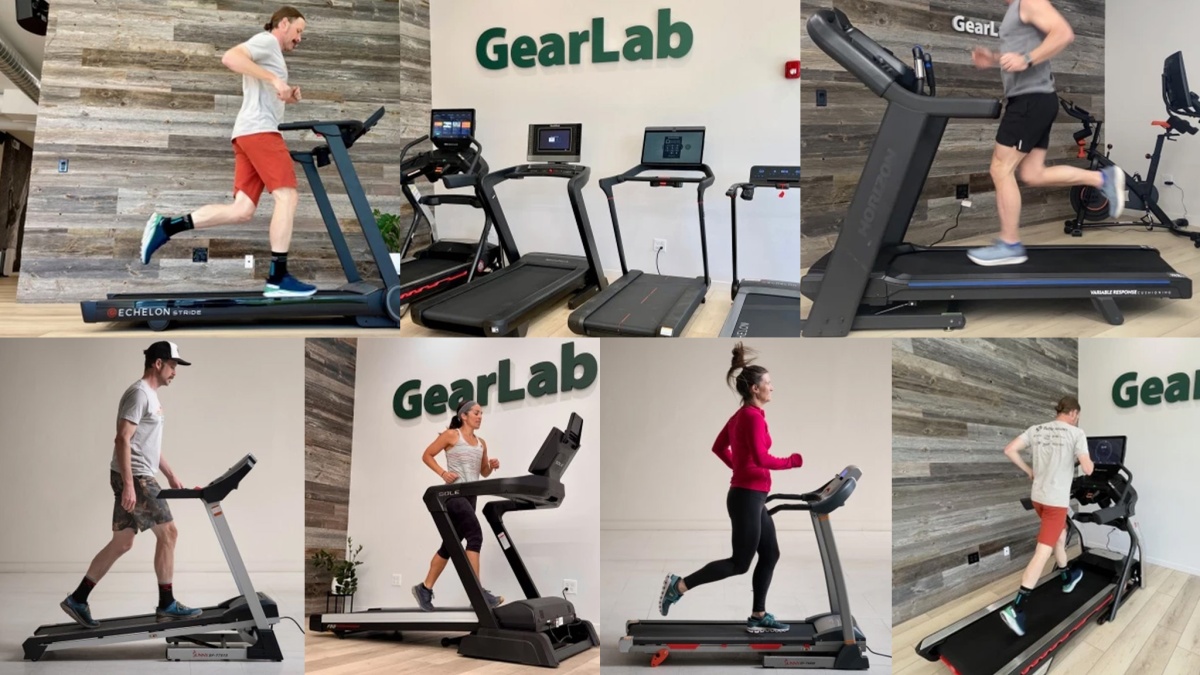
Credit: www.outdoorgearlab.com
Safety Precautions And Best Practices
Staying safe on a treadmill is as important as the workout itself. Many users feel the need to hold onto the handrails while walking or running on a treadmill. This may signal a lack of confidence or balance, but it also raises safety concerns. Following the right safety precautions and best practices can help you overcome this challenge. It is crucial to learn proper treadmill techniques for a beneficial and injury-free exercise.
Proper Treadmill Posture
Maintaining the correct posture is essential for a safe and effective treadmill workout. It includes:
- Standing tall with your head up and shoulders back.
- Looking forward, not down at your feet.
- Letting your arms swing freely at your side.
- Avoiding leaning on the handrails, as it can reduce workout intensity and cause muscle strain.
Correct posture ensures you get the full benefit of your workout and keep your balance without holding on.
Understanding Treadmill Safety Features
A treadmill comes with several safety features that are crucial for accident prevention:
| Feature | Function |
|---|---|
| Emergency Stop | Allows you to stop the belt immediately if you lose balance. |
| Safety Key | Attaches to your clothing and automatically stops the machine if you fall. |
| Handrails | Should be used sparingly, primarily for stability when starting or stopping. |
Familiarize yourself with these features before you begin your treadmill routine. Regular practice builds confidence and reduces the need to hold on.

Credit: m.facebook.com
Frequently Asked Questions Of Why Can’t I Walk On A Treadmill Without Holding On
How Do You Walk On A Treadmill Without Holding It On?
To walk on a treadmill without holding on, start with a slow pace. Keep your posture straight and use your arms naturally. Gradually increase speed as confidence grows. Always focus ahead and maintain balance. If needed, lightly touch the rails for brief stability, then resume hands-free walking.
Why Do I Have To Hold On To The Treadmill?
Holding onto the treadmill is not a requirement but can assist with balance and safety, particularly for beginners or during high speeds. Maintain a light grip to avoid strain.
Why Can’t I Keep My Balance On A Treadmill?
Struggling with balance on a treadmill can stem from inner ear issues, improper footwear, or lack of coordination. Gradually increasing speed and using handrails can help improve stability.
Does Holding The Handles On A Treadmill Make It Easier?
Yes, holding the handles on a treadmill can make walking or running easier by providing balance and support.
Conclusion
Mastering treadmill use without holding on enhances balance and posture. It’s a goal worth pursuing for optimal workout benefits. Start slow, focus on form, and gradually build your confidence. Embrace the challenge, and soon you’ll walk hands-free, reaping full health rewards.
Keep pushing forward to achieve this milestone in treadmill training.
